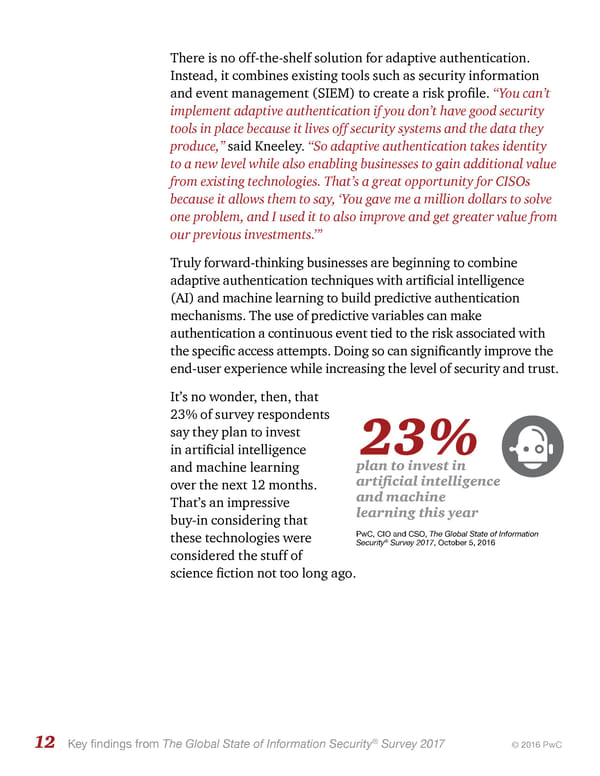There is no off-the-shelf solution for adaptive authentication. Instead, it combines existing tools such as security information and event management (SIEM) to create a risk profile. “You can’t implement adaptive authentication if you don’t have good security tools in place because it lives off security systems and the data they produce,” said Kneeley. “So adaptive authentication takes identity to a new level while also enabling businesses to gain additional value from existing technologies. That’s a great opportunity for CISOs because it allows them to say, ‘You gave me a million dollars to solve one problem, and I used it to also improve and get greater value from our previous investments .’” Truly forward-thinking businesses are beginning to combine adaptive authentication techniques with artificial intelligence (AI) and machine learning to build predictive authentication mechanisms. The use of predictive variables can make authentication a continuous event tied to the risk associated with the specific access attempts. Doing so can significantly improve the end-user experience while increasing the level of security and trust. It’s no wonder, then, that 23% of survey respondents say they plan to invest in artificial intelligence 23% and machine learning plan to invest in over the next 12 months. artificial intelligence That’s an impressive and machine buy-in considering that learning this year these technologies were PwC, CIO and CSO, The Global State of Information ® Security Survey 2017, October 5, 2016 considered the stuff of science fiction not too long ago. 12 Key findings from The Global State of Information Security® Survey 2017 © 2016 PwC
 Toward new possibilities in threat management Page 12 Page 14
Toward new possibilities in threat management Page 12 Page 14